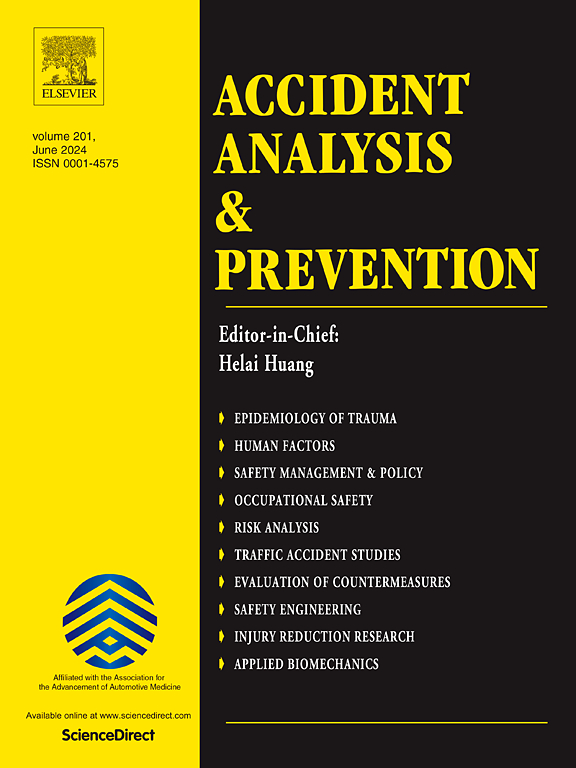Nudges may improve hazard perception in a contextual manner
IF 5.7
1区 工程技术
Q1 ERGONOMICS
引用次数: 0
Abstract
This research investigates the effectiveness of nudge presentation on Hazard Perception (HP) during a computerized Hazard Perception Test (HPT). Three types of nudges were examined: Reminder, Social Norm, and Negative Reinforcement. Their effects on drivers’ reaction times, hazard misidentifications (errors), and hazard recognition failures (misses) were analyzed. Additionally, the study explored how demographic and personality factors relate to individual differences in nudge responses. Results indicated that nudge presentation, regardless of type, improved reaction times and reduced errors. Reduction in errors was uniquely associated with personal characteristics, showing a positive correlation with age. Specifically, female participants and individuals low in conscientiousness exhibited fewer errors following the Social Norm nudge, while males and highly conscientious individuals showed reduced errors after the Reminder nudge. However, misses were unaffected by nudge presentation. All tested dependent variables were influenced by the order of hazard presentation, reflecting both contextual and nudge presentation effects. To further investigate the order’s impact, a follow-up study examined specific hazards sensitive to nudge presentation. Findings revealed that some hazards were more influenced by nudge/contextual factors, while others were unaffected, highlighting the need to consider complex contextual dynamics in HP research. Overall, the study supports the conclusion that nudge presentation can positively influence HP without distracting drivers, offering a promising strategy for improving road safety.
轻推可以在情境中提高对危险的感知。
本研究探讨了在计算机化危险感知测试(HPT)中轻推呈现对危险感知(HP)的有效性。研究了三种类型的助推:提醒、社会规范和负强化。分析了它们对驾驶员反应时间、危险错误识别(错误)和危险识别失败(失误)的影响。此外,研究还探讨了人口统计学和人格因素与轻推反应的个体差异之间的关系。结果表明,轻推的呈现,无论类型,改善反应时间和减少错误。错误的减少与个人特征相关,与年龄呈正相关。具体而言,女性参与者和尽责性低的个体在社会规范推动后出现的错误较少,而男性和高度尽责的个体在提醒推动后出现的错误较少。然而,失误不受轻推的影响。所有被测试的因变量都受到危险呈现顺序的影响,反映了情境和助推呈现效应。为了进一步调查该命令的影响,一项后续研究检查了对轻推表示敏感的特定危害。研究结果显示,一些危害更受推动/环境因素的影响,而其他危害则不受影响,这突出了在HP研究中考虑复杂的环境动力学的必要性。总体而言,该研究支持这样的结论,即轻推可以在不分散驾驶员注意力的情况下对HP产生积极影响,为改善道路安全提供了一个有希望的策略。
本文章由计算机程序翻译,如有差异,请以英文原文为准。
求助全文
约1分钟内获得全文
求助全文
来源期刊

Accident; analysis and prevention
Multiple-
CiteScore
11.90
自引率
16.90%
发文量
264
审稿时长
48 days
期刊介绍:
Accident Analysis & Prevention provides wide coverage of the general areas relating to accidental injury and damage, including the pre-injury and immediate post-injury phases. Published papers deal with medical, legal, economic, educational, behavioral, theoretical or empirical aspects of transportation accidents, as well as with accidents at other sites. Selected topics within the scope of the Journal may include: studies of human, environmental and vehicular factors influencing the occurrence, type and severity of accidents and injury; the design, implementation and evaluation of countermeasures; biomechanics of impact and human tolerance limits to injury; modelling and statistical analysis of accident data; policy, planning and decision-making in safety.
 求助内容:
求助内容: 应助结果提醒方式:
应助结果提醒方式:


